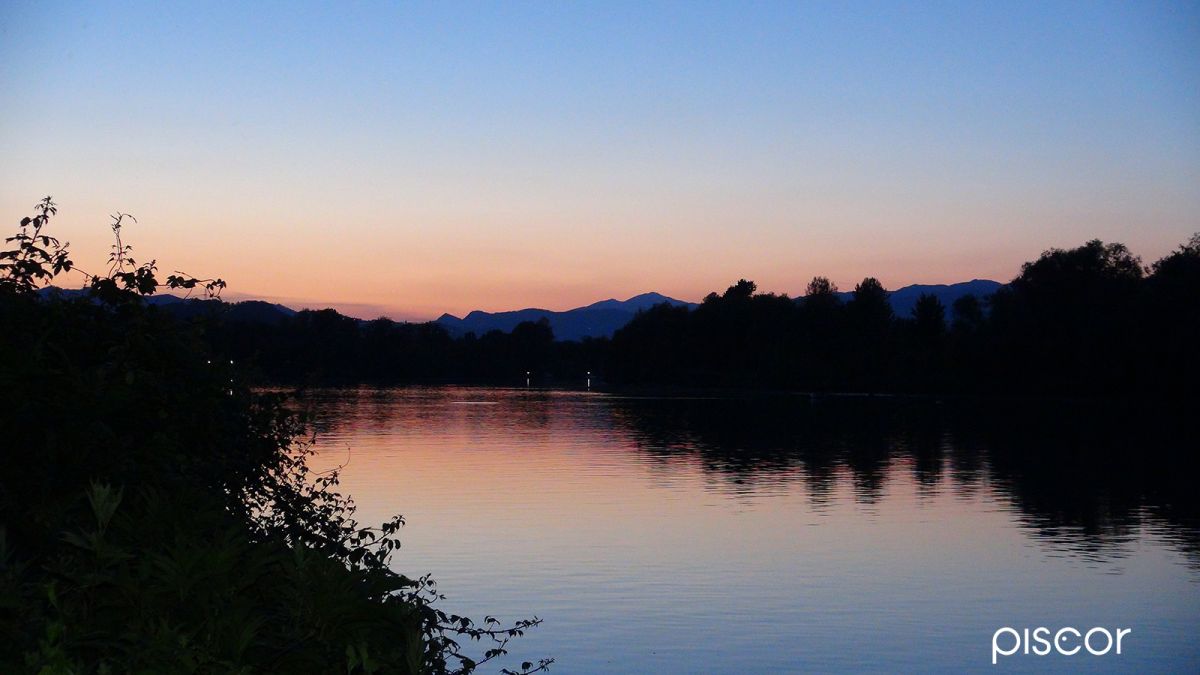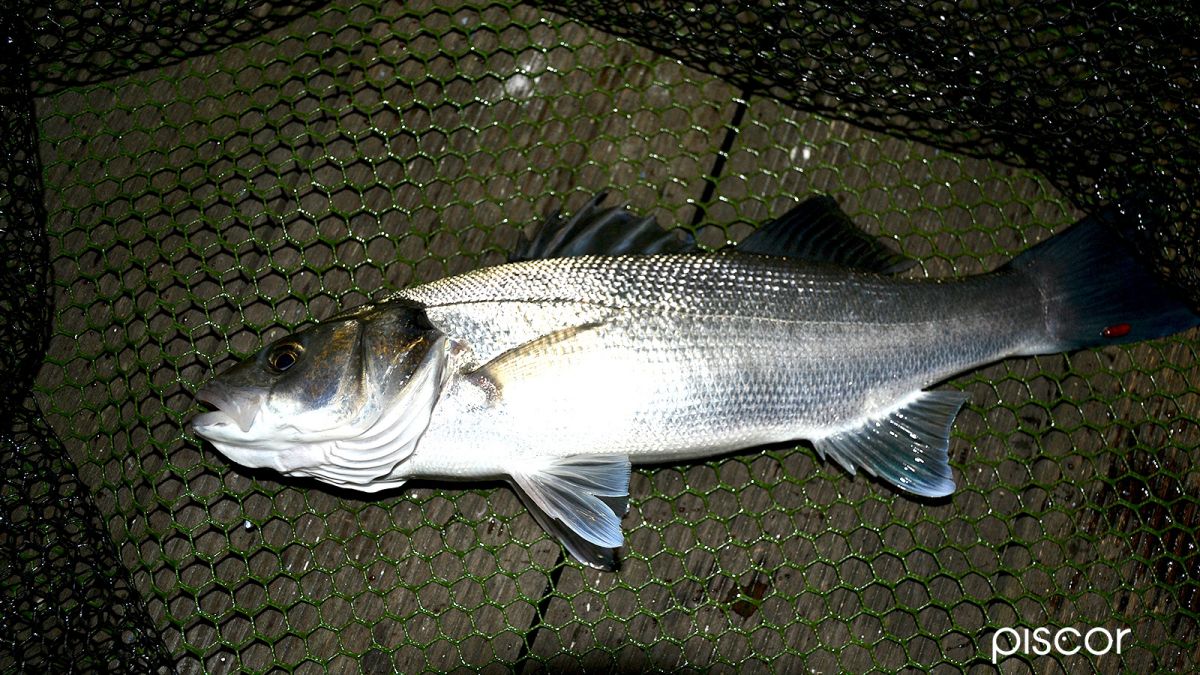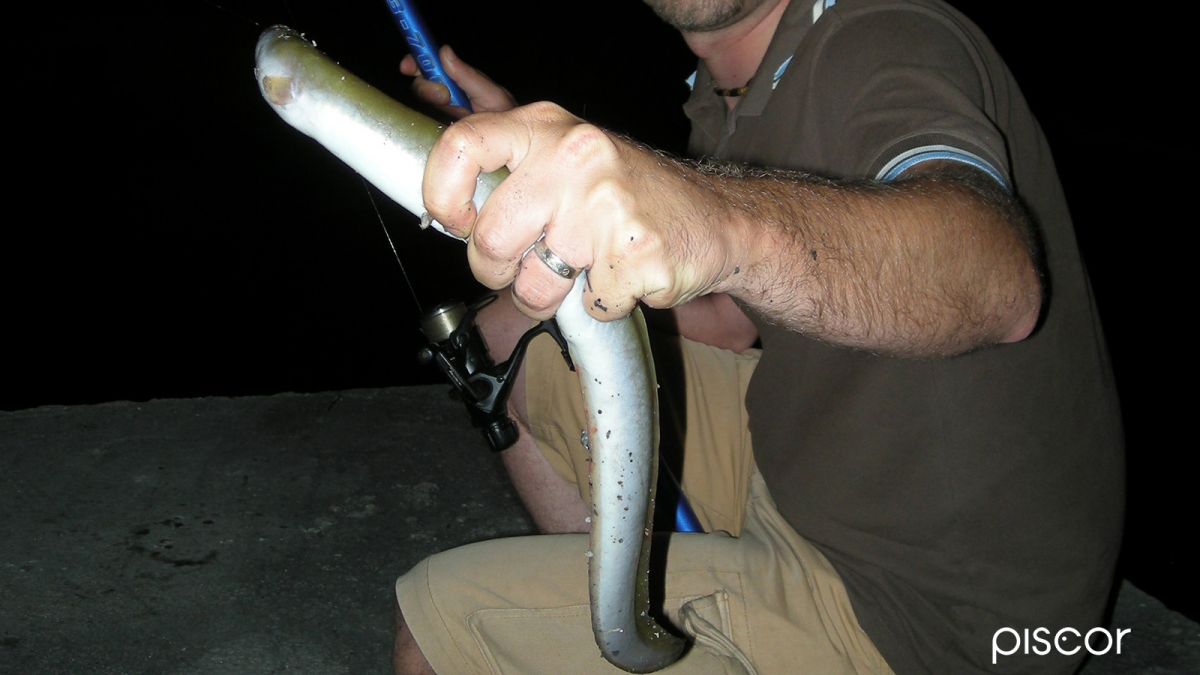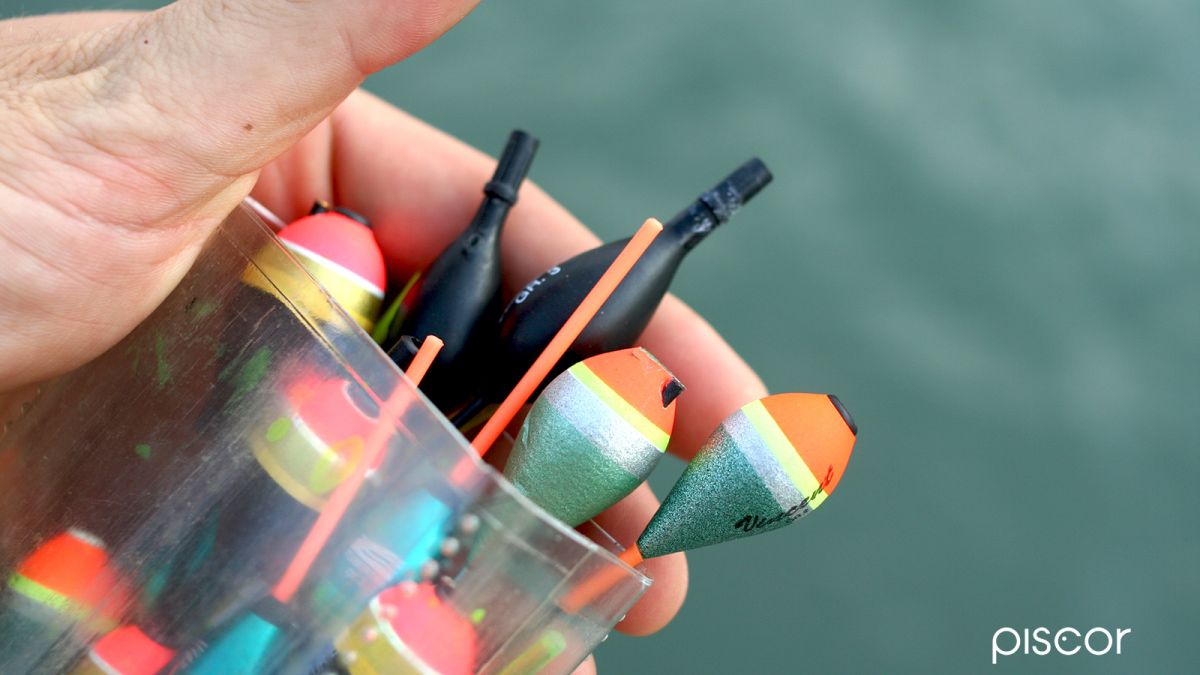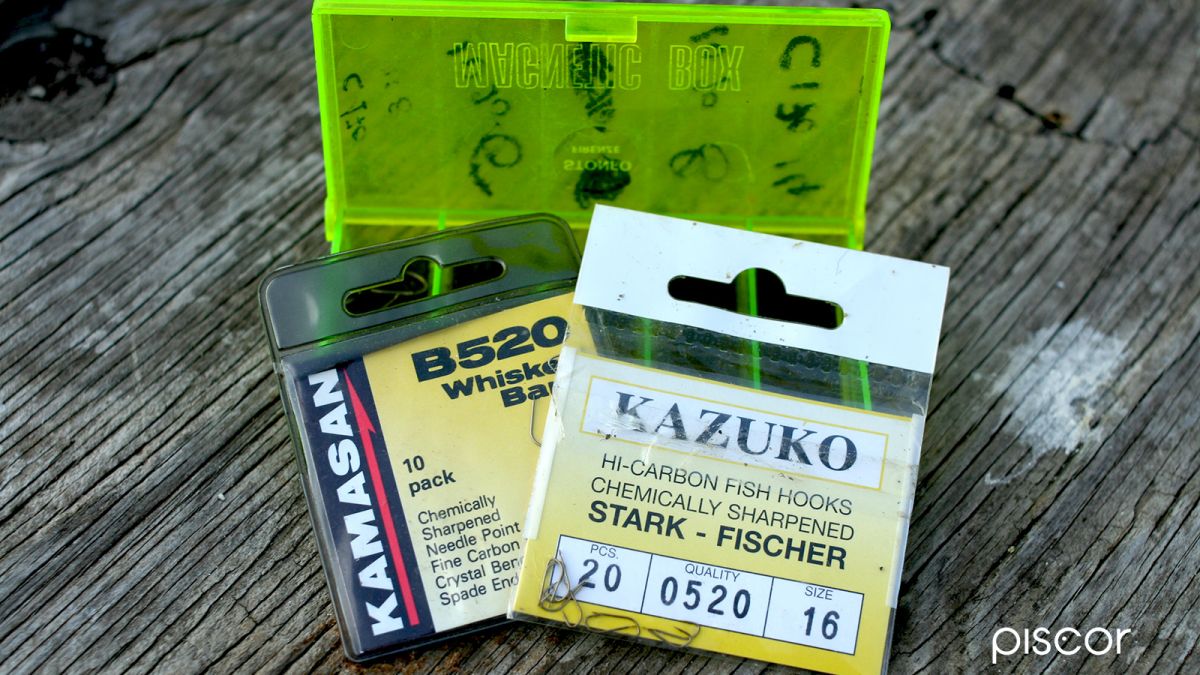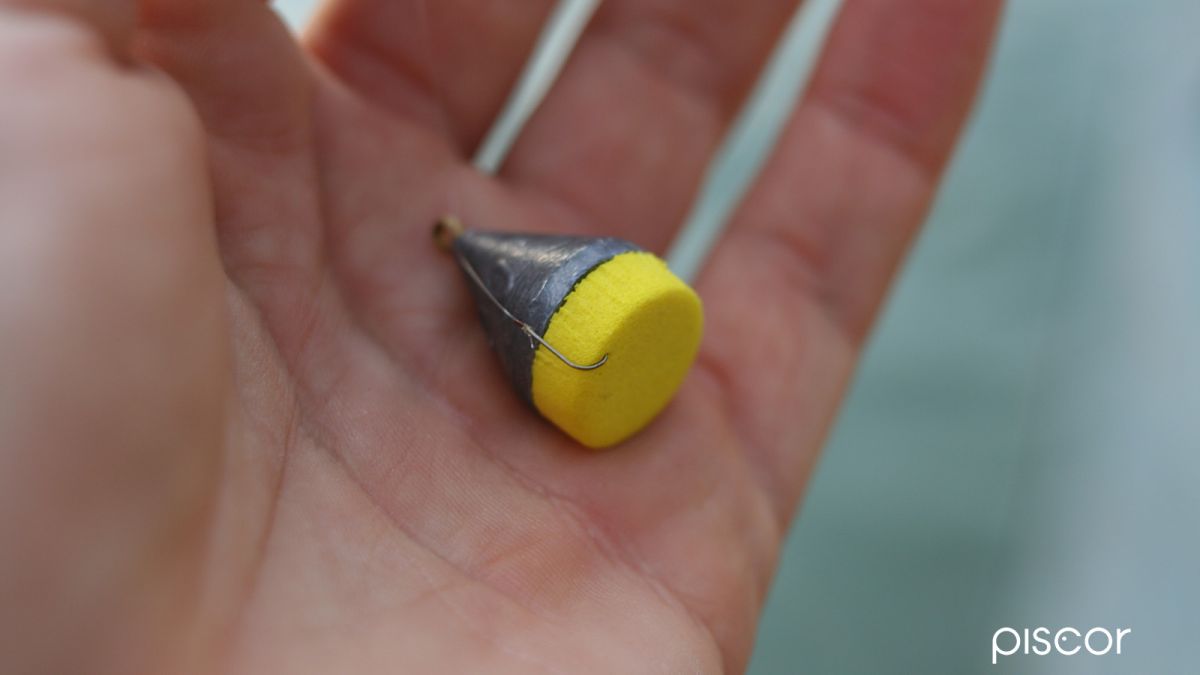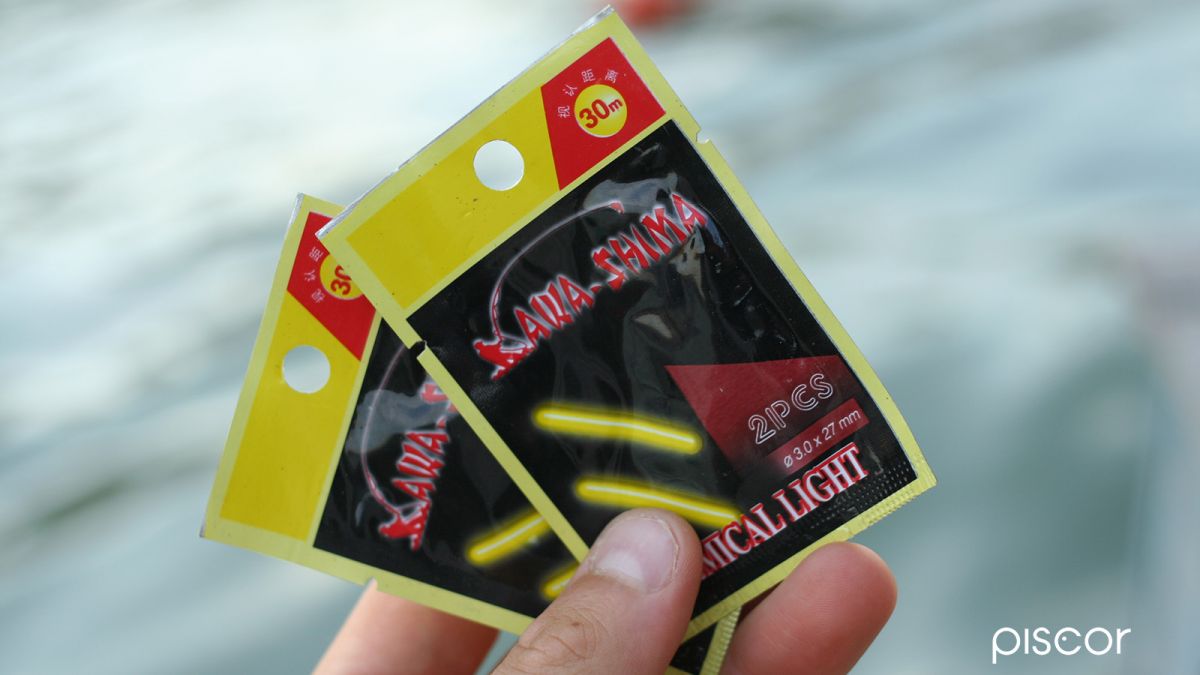When we played all the cards in the right places in search of finest fish and the failures have really lowered our spirits, we should not give in, but change gear and go fishing in totally different places...
Hidden places scattered within the ports, in natural or artificial canals pushing into the waterways we can discover a whole new world, for the most part never seen and experienced before. We are far from the sea and even the quality of the water, although salty, is not excellent.
We are here to have fun, to see so many touches in one evening and put back everything we take in the water. In these places the fish are hardly of size especially in this period, the water is always warm and the mouths to feed are many. But when you fish with a soft six meters rod, a reel loaded with 0.12/0.14 and a capillary rig, even if the fish do not exceed two hundred grams in weight, the fun is guaranteed.
Then you never know, we can also make the blame, then there are pains because the thin equipment will be put to the test and we must give rise to all our experience. In these environments we can take everything from the sea bass to the gilthead sea bream, passing through the mullet and end up handling even a discreet eel without, however, not having to deal with a nice mullet that empties the reel and makes you damn to bring it within the landing net zone.
The fishing spot
Obviously it is not enough to go to places far from the sea to catch some fish, just as it is not enough to put the line in the first canal that stimulates our imagination. Maybe we can make the first shot but ... it's quite difficult!
One of the most important features that we must always take into account is to ensure that there are movements of water and a frequent change of this. In short, that the influence of the tide comes to us to bring refreshment to the fish and water always new to the place of fishing. This is one of the most important factors.
Another factor to consider is the seabed. The fishing area must be characterized by a depth of at least two meters. Sometimes in these environments it doesn't matter if you go there during the last phases of the tide, the important thing, however, is that the water moves even outside the phenomenon.
There are fish here, so if we can fish well even outside the rising tide we can try without problems. If instead outside the rising tide the current that forms is too strong or the water is still like that of a lake and prevents us from fishing at best then we must present ourselves on site during the last three hours of rising tide to have an optimal fishing condition. It should be noted that the tide is always important for fishing in the mouth and at sea.
All you need
A quick overview of accessories and equipment. A Bolo rod with progressive action, matched with a reel spooled with 0.14. Landing net with mouth equipped with nylon net to better pierce the water, frontal torch, nylon spools, hooks and lead assorted for the realisation of the line, some packs of starlight, a kilo of maggots and away to fishing!
The fishing action
The width of these canals can be variable, and the depth step even far from the bank. In many cases we will fish under the tip of the rod or a few meters outside, in others, and the thing becomes even more exciting, the fishing action will take place at farther distances. Where we took the accompanying photos we were fishing at twenty meters with floats of at least three grams and the emotions were not long in coming. Let's see which lines to use to cope with both cases.
Short-distance fishing line
When we have the possibility to fish near, and the depth of the fishing place is not excessive, so between 2 and 4 meters, we will use a Bolo rod of six meters. For the realisation of the line we will opt for a float of spherical shape or egg of a weight appropriate to the current present, however, between 0.70 and 1.50 grams.
The main line where we will go to pass the float will be 0.14 the rig of 0.10 in fluorocarbon. All completed by a hook of n.18 triggered with two maggots. When we go to carry out the scaling of leads that will have to extend over at least 120 cm of line we must be very careful about the distance between leads. Crushed one lead over the knot connecting the main line and the rig, we will fix the second one at a distance of about 30 cm and from there in descending order until we create the bulk.
It is advisable to start with a pellet of No. 11 and climb to measure until you calibrate the float perfectly.
Long-distance fishing line
There are some cases, the most amusing, where the fishing action takes place outside the range of the rod even of several meters. On this occasion, a seven/eight-meters Bolo rod can make the difference, especially if the current allows us to make a good pass, where retention and release will allow us to catch even a few fish of a size.
On the main line, this time of 0.16 to avoid the lead gurgling during the launch phase, we will fix a float of at least three grams, heavier in case the current is really sustained. Then we will insert a torpille that covers 70% of the weight of the float used. For example, if we fish with a three-gram float, we will put in a torpille of at least 2 grams. Then we will fix four spherical dots to calibrate the float. The rig ing of the 0.12, at least 50 cm long, will be completed with a hook of 16.
Fishing Line for fine palates
When the game gets tough in long-distance fishing, because these fish will not be of size, but in many cases give a hard time even to the most experienced, and the bites are not frank, we must use a very soft line for a very natural presentation of the bait.
Always fishing with a float of three / four grams we will use a geometry of shot made as follows: on the main line of 0.14 we will fix the float of three grams with a tapered shape if the current is slow, more spherical if the water runs a little 'more'.
At this point, with a blood knot, we will connect to the main line a 0.16 metre long piece where we will arrange the scaling of leads. The scaling must be composed as follows: two dots for each measurement, we will start with the dots of n.12 to finish with those of n. 1 with which we will make the bulk that will facilitate the launch.
The use of a piece of nylon with a larger diameter than that of the main line, in this case a 0.16, will cancel the overlapping of the rig to the crown of shot leads avoiding annoying gargles. With this line we will be very soft and we will be able to mock even the most malicious of the fish. The rig will always be 0.12 with a hook of n. 16 triggered with two maggots.
Baiting
The baiting will take place with small doses of very frequently launched larvae. In these environments the movements of the current are variable and especially on tidal changes even very violent. It is advisable to bait only when the current is light, or when it stops completely and then restarts.
You can see the bites of possible good size fish in these short but significant moments.
Measure the bottom
We will never tire of saying that the measurement of the bottom is as important as a correct pasture, both operations if they are not done with the right knowledge of the cause will frustrate the entire catch.
Measuring the seabed also means discovering the morphology of the latter in order to understand the bottom where to pass the bait. A bump, a hole, a step are all signs that can benefit the action of fishing or make us fold in another place because this is considered unsuitable for our expectations.
Spend some time measuring the bottom trying to probe the whole stretch of the fishing session. The results will not be long in coming.

